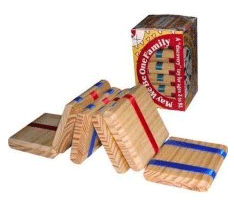In January of 2011, I had written a wistful, prayerful contemporary Christian song, titled “Adrift,” and performed it for my church. They enjoyed it, and I loved singing it because it was a way to worship. Once I had performed the song, however, I moved on to composing newer songs and working on other projects. Little did I know that it would be the last time I would perform the song as it existed then.
Sickness, Difficulties, and Losses
A few months later, I began to fall ill repeatedly, suffering strange new headaches that lasted up to 3 days and were not treatable with any medicines. My will to create, my will to write and sing and play, were thus taken from me, since I sometimes suffered up to 10 headaches a month like this. Soon, weeks went by in which I was never without burning, crushing head pain, whether I was sleeping or awake.
It felt, as spring blossomed into summer and summer faded into fall, that I was living 25% of my life. I went to bed feeling like I had been run over by an 18-wheeler, and woke up feeling like I’d been run over by a school bus. And the constant pain, which got worse if I tried to sleep it off and never truly went away, about drove me nuts. During this time, I also lost the use of my laptop for a little while (due to someone else’s carelessness), and that added stress didn’t help my health much. My mental creativity stunted, my physical energy sapped, and my creativity-producing machine gone–it felt as if I were getting slapped around by life.
Finally, during a routine visit to the dentist in October 2011, we discovered that my wisdom teeth were severely infected and had to be removed. The subsequent oral surgery in early November not only pulled the sources of infection from my jaw, but also seemingly got rid of those burning, never-ending headaches. At last, I could live my life again! I thought everything would be back to normal concerning my creativity, so I could get back to doing what I loved–writing and polishing my prose, poetry, and music.
Not so, as I found out. A mere month after my surgery, my poor injured laptop’s hard drive died, and the data on it was completely irrecoverable. All the work I had done since June 2010 was lost–including the lovely song I had written and performed almost a year previous. All I could remember, because of my grave illness and all the stress, was the title. No lyrics, no melody…no nothing. I mourned it along with the rest of my lost works, knowing that with my forgetfulness, I would likely never remember it.
A Little Scrap of Unexpected Song
I was horribly sad over this, but at least I could comfort myself with a large fraction of my work, which I could still build off of. Slowly, I began to amass more works, though they were nothing like what I had lost, I knew that.
In the middle of all this personal, creative rebuilding, my boyfriend and I had gone to the movies to watch The Avengers when it came out, and I was reminded of how much I had liked some of the other Marvel movies that had come out before, especially Thor, which had come out in March 2011, during the first stages of my terrible headache/wisdom tooth infection.
I ended up borrowing the movie from my boyfriend’s family, then buying a copy of my own, since it had quickly become a favorite of mine. (And, as is my wont when I really enjoy a film, I had already watched it several times back-to-back-to-back. xD)
But it was during one of my many repeat plays, as I watched the scene in Thor where Loki discovers he is not truly Odin’s son, that a little scrap of song started playing in my head. Occasionally this happens to me, where a character or a mood will inspire a new song within my head–it’s a great way to get new ideas. And, since I had composed very little during my illness, I was understandably stoked.
“COOL, I finally got an idea for a new song,” I thought, watching the evocative, sad scene play out as the plaintive, new little melody curled around my brain cells. The melody ached, expressing such wistful sorrow that it nearly brought me to tears. And then…something in the tune jarred memory awake. “Waitaminnit…” I thought, analyzing the short little melody. “That tune–oh, my God, that’s ‘Adrift!’ That’s my lost song!!”
Rebuilding The Lost Song
You never saw a chick pause a movie and run down the stairs to get to her piano keyboard so fast. In minutes, it felt like, I had reconstructed not only the chorus melody, which was the first bit I had remembered, but I had also gotten back the melodies for the verses and the bridge. Not only that, but some lyrics were coming back, too, albeit slowly and in pieces.
A couple of frenzied rebuilding hours passed, and I was able to get back 90% of the original song, with new lyrics put into the places I simply could not remember. I was overwhelmed with the creative urge–after all, my lost song had come back after I had feared I would never, ever remember it all.
Though I am still a little sad for the bits of lyrics I can’t remember, the new lyrics seem to fit even better than the old ones, at least in my estimation. This gives me hope that perhaps all of my lost works, all the little stories, poems, and beginnings of songs, might one day come back better than ever, too, after being cast “adrift” in the void of memory.

































